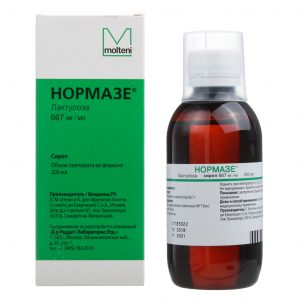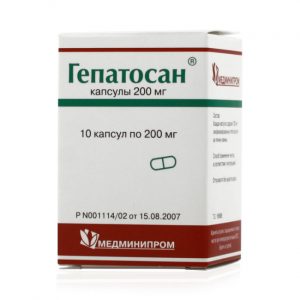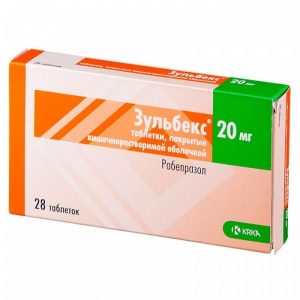Description
Latin name
Cuprenyl
Packaging
100 pcs
Pharmacological action
Cuprenyl has a complexing, immunosuppressive, inhibiting collagen synthesis effect.
Forms chelate complexes with copper, mercury, lead, iron, arsenic, calcium, zinc, cobalt, and gold ions. Reduces the absorption of copper from food and eliminates its excess in tissues.
Cuprenyl has an effect on various parts of the immune system (suppression of the T-helper function of lymphocytes, inhibition of neutrophil chemotaxis and the release of enzymes from the lysosomes of these cells, increased macrophage function).
Has the ability to disrupt collagen synthesis by cleaving cross-links between newly synthesized tropocollagen molecules. It has anti-inflammatory effect. Penicillamine is an antagonist of pyridoxine (vitamin B 6).
Indications
Konovalov-Wilson’s disease
poisoning with copper, inorganic compounds of mercury, lead, gold, zinc
hemosiderosis
cystine nephrolithiasis srdlkr sperm arrhythmoid liver cirrhythloid rheumatomas
Contraindications
hypersensitivity
agranulocytosis srdlkrcp
Use during pregnancy and lactation
During pregnancy, patients with Konovalov-Wilson’s disease or cystinuria continue treatment with penicillamine in a dose of not more than 1 g / day, in patients with rheumatoid arthritis, penicillamine is canceled.
If necessary, use of penicillamine during lactation should stop breastfeeding.
1 srd. contains:
Active ingredient: penicillamine 250 mg
Excipients: potato starch PVP talc magnesium magnesium stearate oxymethylpropyl cellulose polyoxyethylene glycol titanium dioxide dye (E122)
Dosage and administration
Cuprenil is taken orally, 1-2 hours before a meal or 2 hours after a meal or other drugs. Drink exclusively with water.
In Wilson-Konovalov’s disease: for adults – at the beginning of treatment 250 mg / day, gradually increasing the dose to 1500 mg, rarely up to 2000 mg / day. The daily dose is taken fractionally throughout the day. The dose of Cuprenil is considered effective if the daily excretion of copper in urine (after 1 week of treatment) exceeds 2 mg. In the future, the adequacy of the dose is determined based on the level of free copper in the blood serum (not less than 10 μg / ml). Children – 20 mg / kg / day, the maximum daily dose is 500 mg.
In acute metal poisoning: adults – 750-1500 mg / day, children – 30-40 mg / kg / day.
With cystinuria: adults – 750-2000 mg / day with the simultaneous administration of vitamin B6 and compensation for copper deficiency, children – 90 mg / kg / day.
For rheumatoid arthritis and scleroderma: the initial dose of Kuprenil is 125 mg / day during the first week with regular general blood and urine tests. From the second week, the dose is increased to 250 mg / day, from the third – to 375 mg / day. Treatment with the last dose (375 mg / day) is carried out every day for 3 months. The maximum dose of Cuprenil is 500 mg / day, with its ineffectiveness, treatment is canceled. When the condition improves, treatment is continued for 1-2 years, gradually reducing the dose to 250 mg, taken 1 time in 2 days.
In case of alcoholic liver cirrhosis: on an empty stomach, at least 1 hour before or 2 hours after eating (recommended before dinner), and also not earlier than 1 hour after taking any other drugs, 250-125 mg 1 time per day. The therapy is carried out under close monitoring of the activity of ALT and AST in blood plasma.
Side effects of the digestive system: anorexia, nausea, vomiting, diarrhea, aphthous stomatitis, glossitis, intrahepatic cholestasis, pancreatitis.
From the hemopoietic system: eosinophilia, thrombocytopenia, leukopenia, anemia (aplastic or hemolytic), agranulocytosis.
From the respiratory system: interstitial pneumonitis, diffuse fibrosing alveolitis, Goodpasture syndrome.
From the side of the central nervous system and peripheral nervous system: complete loss or distortion of taste sensations rarely – reversible polyneuritis (associated with vitamin B6 deficiency).
Dermatological reactions: skin rash, epidermal necrolysis, alopecia.
Allergic reactions: allergic alveolitis, fever, polymyositis, dermatomyositis, lupus-like reactions (arthralgia, myalgia, erythematous rash, the appearance of antinuclear antibodies and antibodies to DNA).
Other: nephritis, breast enlargement with the development of galactorrhea (in women), myasthenia gravis.
Drug Interactions
Iron preparations reduce the absorption of penicillamine and weaken its therapeutic effect.
Penicillamine enhances the neurotoxic effect of isoniazid.
When co-administered with penicillamine, it is possible to decrease the level of digoxin in the blood plasma.
Storage conditions
The product should be stored out of the reach of children at temperatures between 15 ° and 25 ° C.
Shelf life
3 years
Deystvuyushtee substance
Penicillamine
Terms and conditions
prescription
dosage form
tablets
Possible product names
CUP ORENRIL 0 0.25 25g 100
Cuprenil 250mg Tab. p / pl / rev X100 (R)
BROUGHT TAB. P.P. O. 250MG No. 100
Kuprenil tab. p / o 250mg No. 100
Teva Pharmaceutical Enterprises Co., Ltd. Israel




